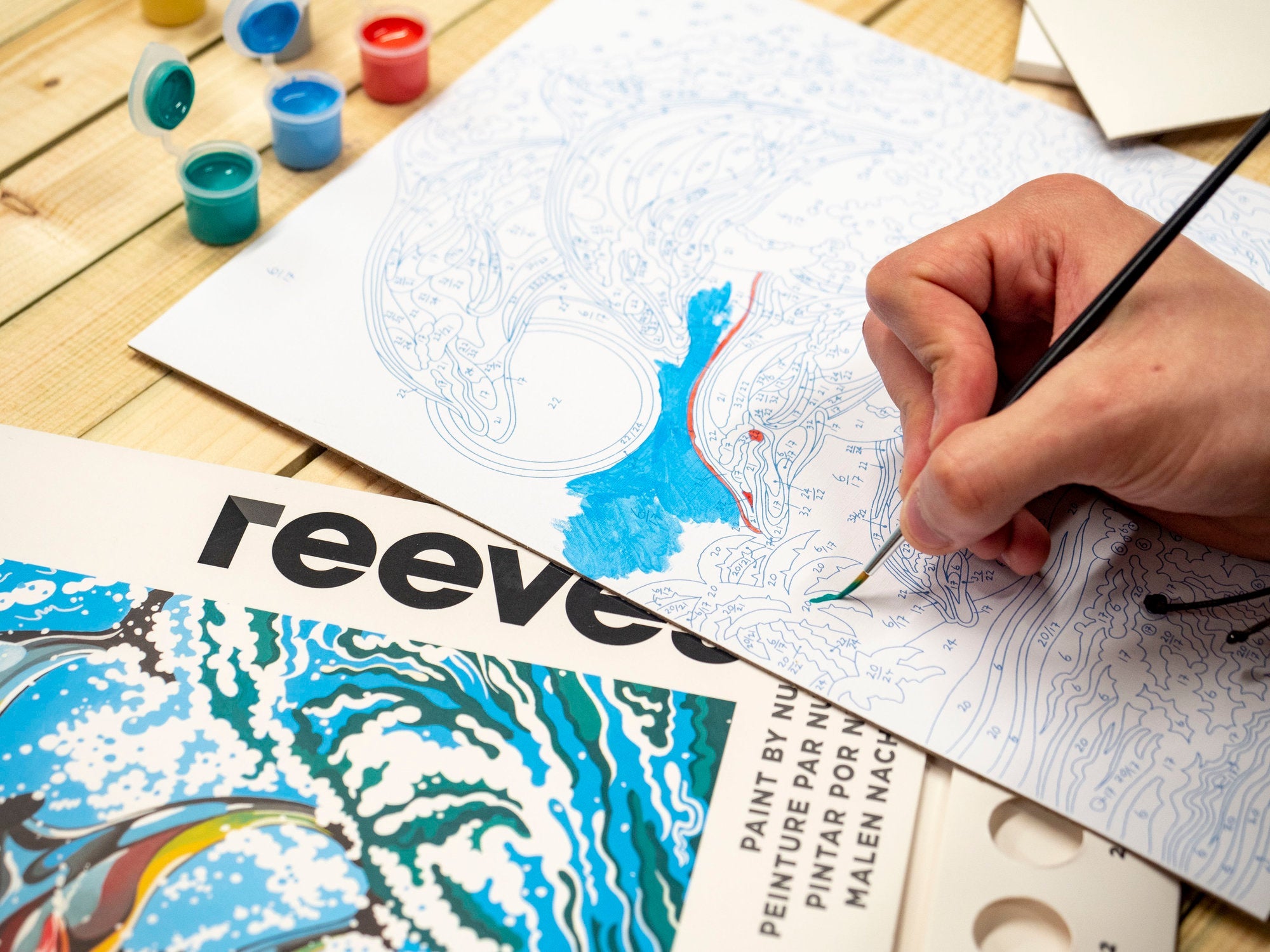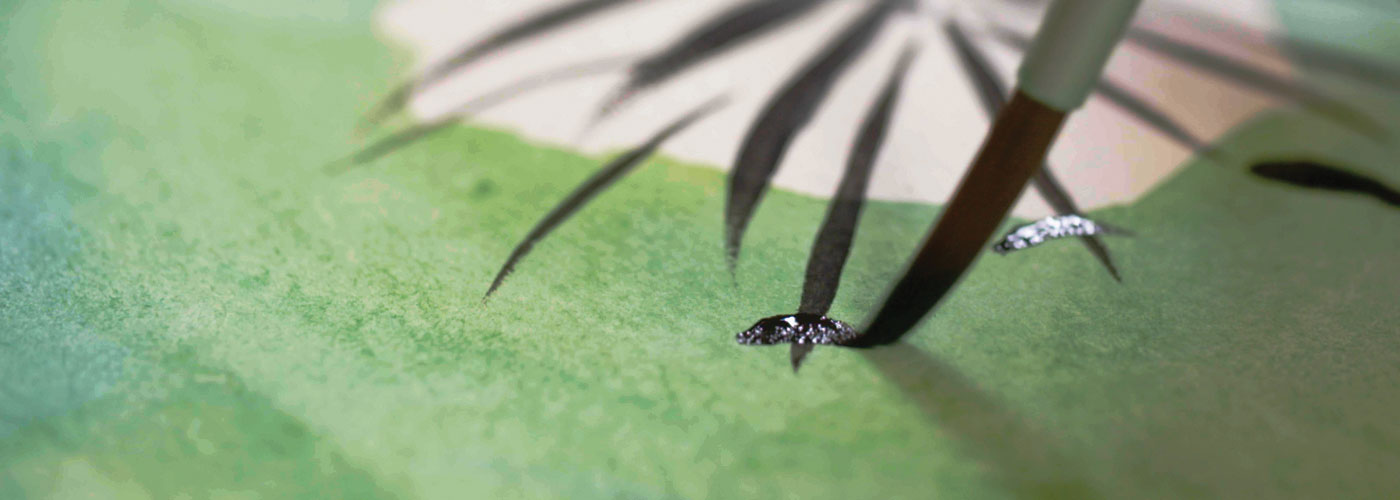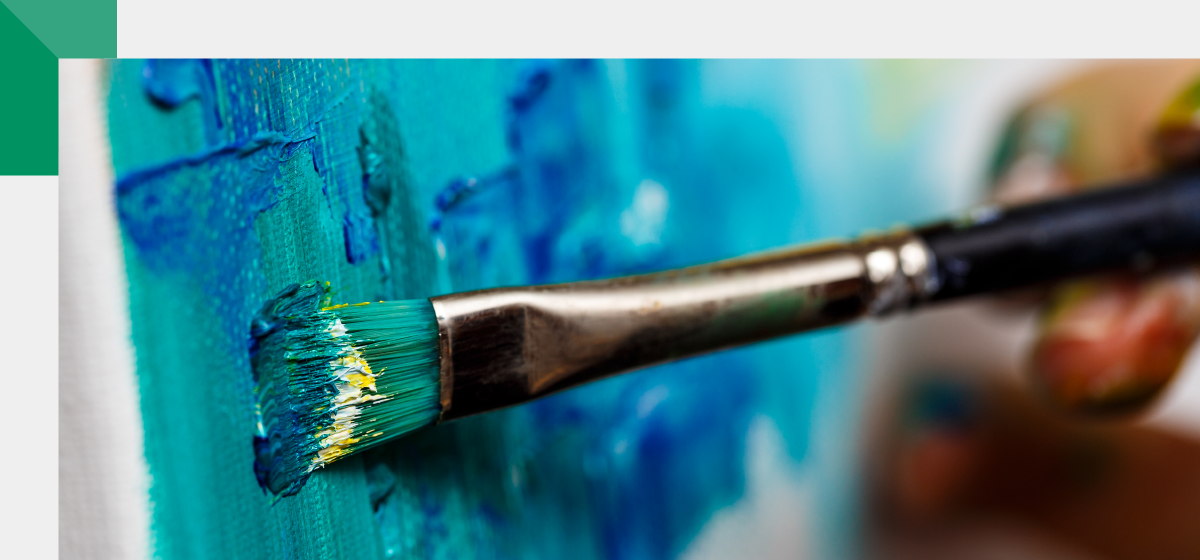Choosing a paint brush can seem overwhelming, especially if you're just starting out. With so many different shapes and sizes, how do you select the right brush for your project?
Best brush for Acrylic Painting
A synthetic brush set is the ideal choice for beginners starting to paint with acrylics. You want a combination of round brushes for finer details and wider, flat bristles to cover larger areas; a set will offer you a choice of brush heads.
Synthetic brushes are best for acrylic paint because they're more durable and maintain their shape well. Natural brushes can be used with acrylics, but they're more suited to oil paint. Natural bristles tend to pick up more paint, but they're usually expensive and might break if exposed to water or hardened acrylic paint.
It helps to have a vision in your mind of the finished result and what type of effect you want to achieve. Opt for stiffer bristles, if you want textural, raw effects, whereas a softer brush is better for a smoother finish with more blending.
Watercolour Brushes
Knowing which brushes to use with each type of paint and surface will make painting easier, especially for new painters, and let inspiration flow from your fingertips.
When it comes to watercolour, round brushes are the most commonly used. These multipurpose brushes work well for small details and broader strokes. Flat brushes are a good choice for watercolour washes and solid
linear strokes.
What is a Filbert Brush?
A filbert brush is characterized by its flat, oval-shaped bristles and rounded tip. This unique shape allows for a wide range of brushstrokes, from delicate details to bold, sweeping strokes. Overall, the filbert brush is valued for its adaptability, providing the flexibility to experiment with different techniques and effects.
The rounded edges enable soft curved strokes, which are ideal for blending and creating smooth transitions between colours. This is particularly useful when painting natural subjects like flowers, foliage, and skin tones, where soft edges are needed. However, the brush's shape also allows for precise control, to create detailed lines and shapes as well as bolder strokes.
Filbert brushes are excellent for creating texture. By varying the pressure and angle of the brush, different effects can be achieved, such as the appearance of fur, feathers, or grass. The versatility of the filbert brush makes it a good tool for everything from portrait to landscape painting.
How to look after your paint brushes
No matter which ones you choose, looking after your brushes properly will prolong their life and keep them in good condition. When you've finished painting give your brushes some TLC and attention by following these steps.
Clean After Every Use:
1. Remove Excess Paint: Wipe off as much paint as possible using a rag or paper towel. This prevents paint from drying on the bristles.
2. Rinse Thoroughly: For water-based paints like acrylics or watercolours, rinse the brush under lukewarm water until the water runs clear. For oil-based paints, use a solvent like mineral spirits or turpentine. Swirl the brush in the solvent and then wipe it on a clean cloth.
3. Use Brush Cleaner: For a deeper clean, use a brush cleaner for oil brushes, or mild soap for acrylic and water-colour brushes. Work the soap into the bristles and rinse thoroughly until the water is clear.
Shaping and Drying:
1. Shape the Brush: Gently reshape the bristles with your fingers while they are still damp. This helps maintain the brush’s shape and ensures it dries correctly.
2. Dry Horizontally or Vertically: Lay the brush flat to dry, or ideally, hang it with the bristles pointing down. This prevents water from seeping into the ferrule (the metal part that holds the bristles), which can loosen the glue and cause the bristles to fall out.
Brush Storage Tips:
1. Store Properly: Store brushes in a way that protects the bristles. Use a brush holder or stand them upright in a container, ensuring the bristles are not bent or pressed against any surface.
2. Avoid Submersion: Do not leave brushes soaking in water or solvent for extended periods, as this can damage the bristles and weaken the adhesive holding them in place.
Periodic Maintenance:
1. Deep Clean Regularly: Periodically, give your brushes a deep clean using a specialized brush cleaner to remove any dried paint or residue.
2. Condition Natural Bristles: For brushes with natural bristles, using a hair conditioner will keep them soft and flexible and help prevent them becoming brittle and breaking.



